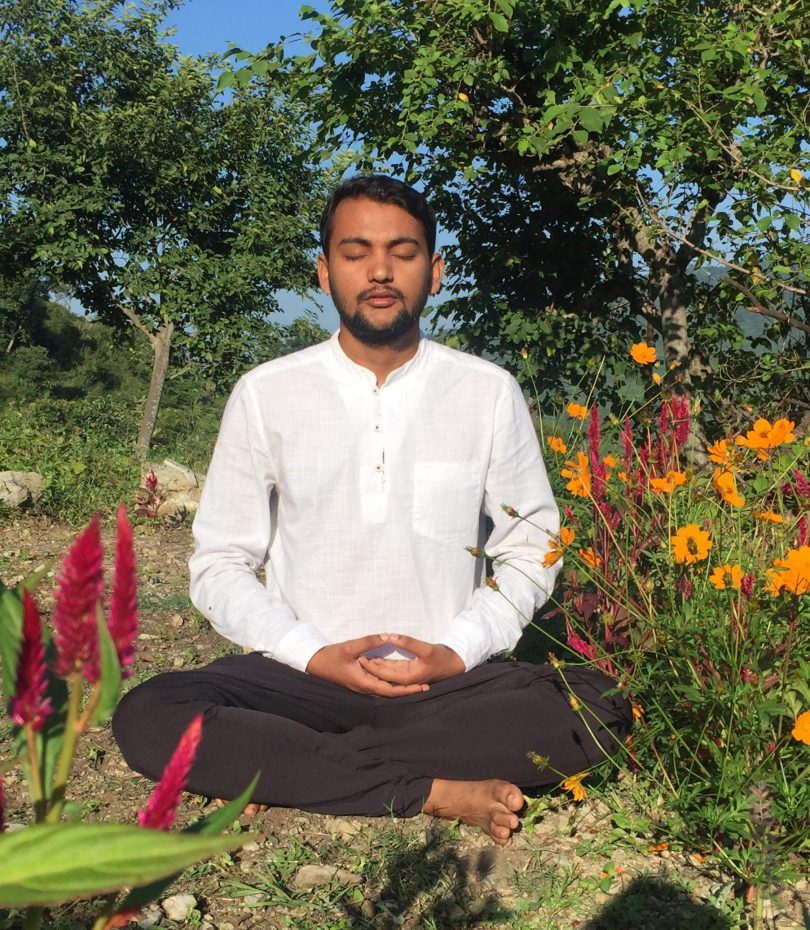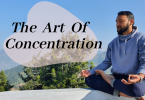Yoga is a well known system for its holistic healing and quality which consists of Asana (physical postures), Shatkarma (purification techniques), Pranayama (breathing exercises), Dharna (concentration) and Dhyana (meditation) etc.
Dhyana is a sanskrit word which is translated as meditation. The word Mediation comes from a Letin word ‘meditari’ meaning “to think or contemplate”. But dhyana is much more than just thinking, contemplating or fantasizing.
Myths about meditation
Before i talk about Dhyana (meditation), let me start with what is it not, which will help you in clearing the myths of meditation. There are many myths about meditation. Wrong notions and false assumption can get in the way of understanding actual meditation.
Myth 1. Many people believe that meditation is emptying the mind or leaving it blank. Meditation techniques involve observation and reciting. So how come mind can remain blank during such techniques.
Myth 2. Meditation is not only about relaxing the body and mind.
Myth 3. Bliss is indeed experience when your mind becomes blank and silent. You confirm this every night in deep or dreamless sleep. So to experience bliss no need to meditate rather try to improve quality of your sleep. Because there is much more to meditation than merely enjoying a few moments of bliss.
Myth 4. Some say that mediation is a mystical condition or a state of super consciousness. These lofty words can make it seem exotic and appealing. Mystical experience can not be understood or shared with others. If it were truly mystical, it could not be taught or learned.
Myth 5. It is also not about finding super consciousness. Even the word super consciousness is not found in any Vadic Scripture. It seems to be an entirely modern concept for promoting or glorifying meditation rather than providing real instruction.
Myth 6. Mediation is also not about imagining success, wonderful possession or any kind of appreciation from others.
Myth 7. Sometime meditation is considered as narcissistic or self centric. Although it may appear self obsessed as sitting in one place with closed eyes, smiling with contentment as peace and happiness filled in their hearts. But if they share their peace and happiness with others, can they truly be considered self centred?
Best reference of meditation
There is no better theoretical foundation for the practice of meditation than Yoga Sutra of Patanjali. Anything you want to learn your approach should be systematic.
In the book Yoga Sutra of Patanjali, he provides a systematic method known as Ashtanga Yoga (better to say eight step system of meditation) for managing the mind and leading it to a state of realization.
The 8 limbs are divided in two categories; first five limbs (Yama, Niyama, Asana, pranayama, pratyahara) known as external practice of yoga and last three limbs (Dharna, Dhyana, Samadhi) known as internal practice. Seventh limb of eight limbs is Dhyana means meditation.
When we study Ashtang Yoga systematically it clearly shows that when we discuss about mediation without knowing Dharna (concentration), this whole discussion is completely pointless. The first step of Dhyana is Dharna or we only reach in the state of meditation through concentration.
First understand concentration
Patanjali explains Dharna in following sutra (P.Y.S 3.1) “desha-bandhash-cittasya- dharana” which can be translated as “Concentration is trying to keep awareness on one object for extended period of time”
There are many kinds of objects suitable for concentration, like sacred images, sounds, statues, candle flame and so on. But when you first learn to concentrate best is to choose something easy to grasp.
The more you practice more you get better in it. So concentration must be the part of our life-style. Whatever you do in your daily life try to do it with focus, and then you will be able to practice concentration anytime and anywhere.
One of the best technique to improve concentration is Trataka. know how to practice Trataka.
The true meaning of meditation
In the next sutra (P.Y.S 3.2) Patanjali explain Dhyana – “tatra pratyayaika-tanata dhyanam” which can be translated as “Meditation is the state of uninterrupted flow of concentration on same object (object of concentration)”
Unless concentration has been practiced it is not possible to achieve the uninterrupted flow of concentration. Only through ABHYASHA (continuous devoted practice) of Dharana (concentration) can lead us to state of meditation.








Wonderful post. Thank you.
Thank you Bev porrino ji for reading and taking time to appreciate, will be publishing more interesting reads. Stay connected and Stay blessed.